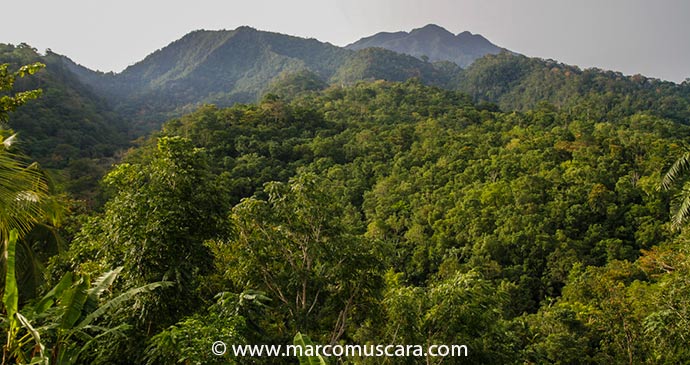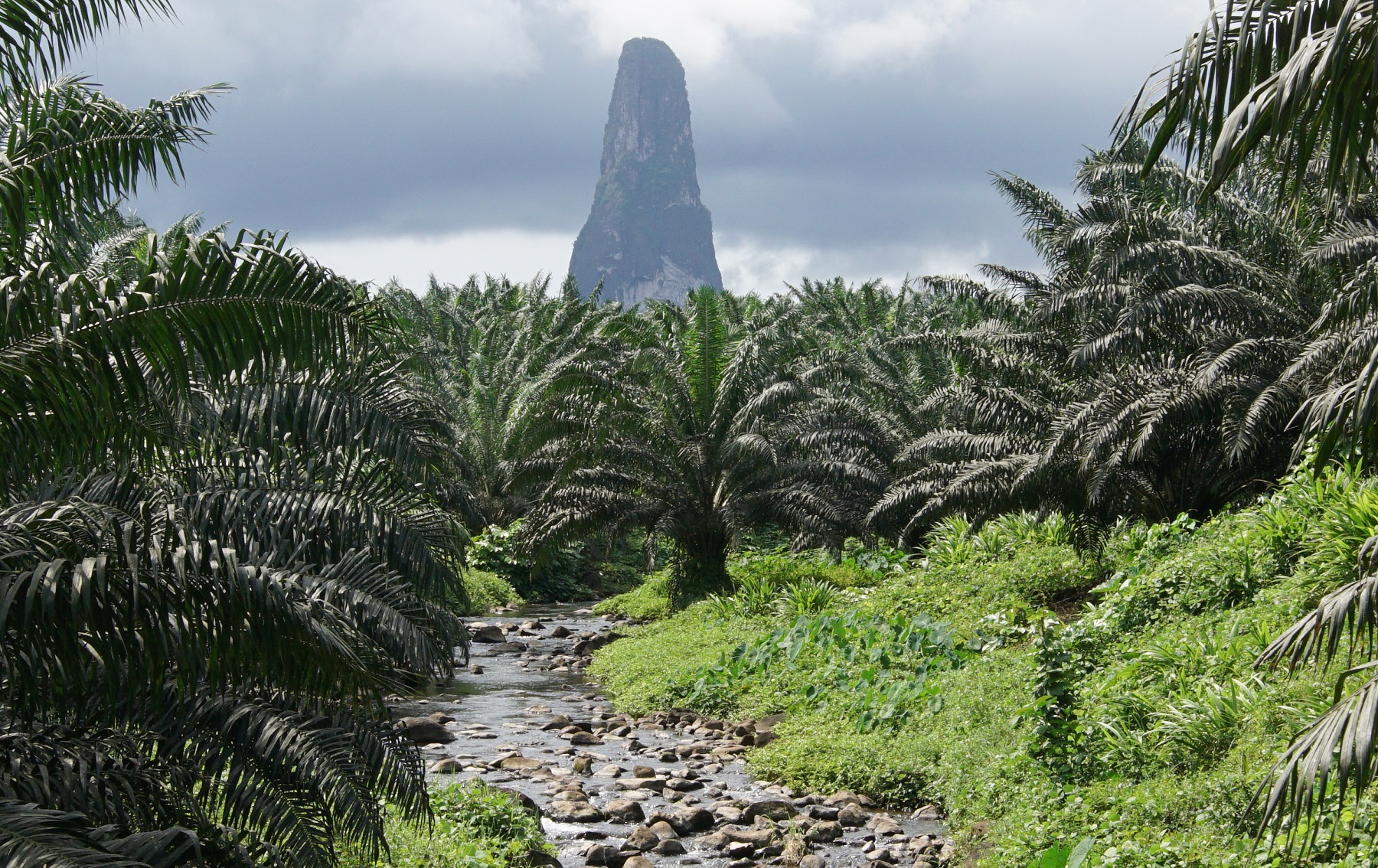When the driver rang the doorbell at 04.30 to pick us up, it was still dark in São Tomé town. Luckily, the bakery down the road was already open, so Helmut and Karin from Germany and I picked up some warm pains au chocolat and fresh rolls for the drive north.
Shuttling through the spreading daylight, there was little conversation as we drove up past the Ponta Figo plantation, picking up the guides, José and Brice, to our starting point at about 500m altitude. While we loaded up with bottles of water,
Nilo the driver rustled in the forest nearby, trying to drag a pimpinela vegetable within his reach; whenever I see him, he is always collecting herbs and plants for food or to make up some remedy for a member of the family, in true forro style.

On the long slog up, through big, ancient trees, light-green ferns and dangling lichens, Brice kept us entertained: he carved off some bark from a tree and held a match to it, lighting it with a steady flame that carried on burning on its own. This was the oil tree, pau d’óleo – handy to know if you should ever find yourself stuck in a rainforest with no dry wood. Not that I would recognise the tree the next time I saw it; you could spend a lifetime learning tree recognition on these islands.
Growing under our feet was capim colchão, mattress grass, and after a few hours’ hiking, it looked inviting! As we climbed, José taking the lead, once in a while we heard a crash from below: a banana plant falling over, weighed down by rainwater. Suddenly, a shout! There is only one thing that could make a guide cry out like this: the black cobra. And indeed, a cobra preta, seeing its escape route blocked, had hurled itself through the air to get out of our way, right past the guide, who, understandably, thought it was going for him.
Meanwhile, the forest was changing around us, as the trees became more stunted and the canopy more open. We were entering the mist forest, its subtly reduced colour range of nebulous greys and greens creating a magical atmosphere.
At some 1,850m, we reached the campsite at Mesa do Pico de São Tomé, surrounded by lots of white-blossoming kata d’obô trees covered in tree ferns, a quinine tree and a passionfruit tree. We collapsed on to the grass in the sun, eager to save our energy for the last bit up to the top. At some 1,300m, this was already one of the longest ascents I’d ever completed in a day, and I couldn’t believe my luck as we hadn’t had a spot of rain.
One more hour on a steep overgrown path got us to the summit of the Pico. As there is not much of a view, we took pictures of ourselves. Back at camp, shamefully, we didn’t do anything, while the guides prepared a dinner of spaghetti with fish and vegetables. I dropped hints about ‘celebrating in style’, fishing for a swig of Karin’s Bell’s whisky. Unfortunately, this apparently very effective family remedy to ward off stomach bugs was strictly rationed. An electric storm rumbled over the hills somewhere as we crawled into our tents.

The next day, after a breakfast of coffee and rolls, it was time to switch the camera to macro mode for a bit of orchid photography. Right under the wooden sign pointing the way to the Pico sits a bobofilho (‘yellow son’, a local name with no claims to botanical correctness), and a one-minute walk up through the grass yields a beautiful epiphyte polystachia orchid clinging to the trees. Unfortunately, we soon found out that we were not going to be so lucky with the weather. The rain started as we began to trudge along towards Carvalho, and continued for three hours, soaking us through and through.
All of a sudden, like a flash, José’s machete came down on something: a small samagungú tarantula, hairy, brownish and dead. Apparently, if you are bitten, it’s not a major problem, but don’t drink any water. On the way down from Carvalho the view occasionally opened up to reveal the top of Ana Chaves and other peaks in the mist. Possibly we should walk a little faster, I thought, as behind me Brice managed to carve a spoon out of a piece of wood picked up on the way as he walked.
Continuing down past rows of bright-red monkey flowers, through bamboo forests, and crossing a couple of rickety bridges, we were only too glad to see Nilo waiting to take us to the Bombaim plantation, where a cold beer on the balcony beckoned. Seven years on, I have climbed the Pico again several times, in the rainy season and the other way round, starting from Bom Sucesso, with tour groups. The first time, the rain started at Lagoa Amélia and did not stop for eight hours, completely soaking the sleeping bags and mats. We didn’t get to the Mesa campsite as planned, only making it to Estação Sousa, and it was too wet to light a fire.
If that happens, you’re looking at a two-hour walk the next morning, before a 45-minute climb to the top. That last bit you can do without luggage, leaving your backpack at the sign to Ponta Figo (a descent of about seven hours). One of the lessons I learnt from this was not to attempt the Pico if you have major knee issues, as the up and down, and getting caught in the rootwork and slipping on mossy planks of cut wood is merciless.
Another is to wrap everything in extra drybags or bin liners. Bring a cooling gel – my personal favourite, Biofreeze, got used every single time. Personally I’d tuck away the hiking poles and rely more on hands and feet. Putting on climbing gloves will save your hands from thorns entering the skin when you grab the wrong tree (such as the black spiky one I chose) and will make you feel more secure in terms of the local fauna, too. We did spot a 2m cobra preta, though.